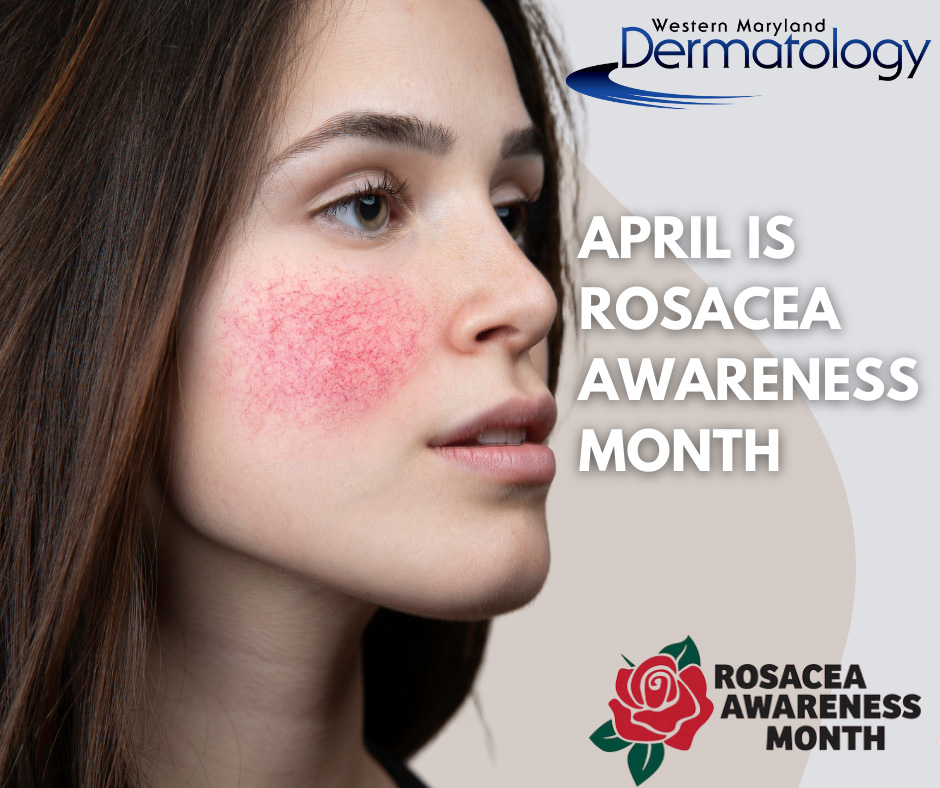Understanding Rosacea: Shedding Light During Rosacea Awareness Month

As we embrace Rosacea Awareness Month, it’s crucial to shed light on a skin condition that affects millions worldwide. Rosacea isn’t just about the occasional blush or flushed cheeks; it’s a chronic and often misunderstood condition that can significantly impact one’s quality of life. Let’s delve into the intricacies of rosacea, from its symptoms to its management, and strive to foster greater understanding and empathy for those living with it.
What is Rosacea? Rosacea is a chronic inflammatory skin condition that primarily affects the face, causing redness, visible blood vessels, bumps, and in severe cases, thickened skin. It typically manifests between the ages of 30 and 50 and is more common in fair-skinned individuals. Despite its prevalence, the exact cause of rosacea remains elusive, though genetics, environmental factors, and an overactive immune system are believed to play a role.
What are the symptoms?
The symptoms of rosacea can vary widely from person to person and may include:
1. Persistent facial redness, often resembling a sunburn or blush.
2. Visible blood vessels (telangiectasia) on the nose, cheeks, forehead, and chin.
3. Papules and pustules resembling acne.
4. Thickened skin, particularly on the nose (rhinophyma).
5. Eye irritation, including dryness, itching, and sensitivity to light (ocular rosacea).
Impact on Quality of Life: Beyond its physical manifestations, rosacea can have a profound impact on emotional well-being and self-esteem. Many individuals with rosacea report feeling self-conscious about their appearance, leading to social anxiety, depression, and a diminished quality of life. Furthermore, misconceptions and stigma surrounding the condition can exacerbate these psychological burdens, highlighting the importance of awareness and education.
Management and Treatment:
While rosacea cannot be cured, various treatment options exist to manage its symptoms effectively. These may include:
Topical medications: Creams, gels, or lotions containing antibiotics, azelaic acid, or anti-inflammatories can help reduce redness and inflammation.
Oral antibiotics: In cases of moderate to severe rosacea, oral antibiotics may be prescribed to control inflammation and prevent flare-ups.
Laser therapy: Certain types of lasers can target blood vessels and reduce redness and visible blood vessels.
Skincare: Gentle skincare routines using non-irritating, fragrance-free products can help minimize irritation and flare-ups.
Empowering Those Affected: As we observe Rosacea Awareness Month, let’s commit to empowering those affected by the condition. This includes fostering a supportive and understanding environment, challenging misconceptions, and advocating for greater research and resources for rosacea management. By amplifying the voices of individuals living with rosacea and promoting inclusivity and empathy, we can work towards a world where everyone feels comfortable and confident in their skin.
Rosacea is more than just a cosmetic concern; it’s a chronic condition that can profoundly impact physical and emotional well-being. As we raise awareness during Rosacea Awareness Month, let’s strive to foster greater understanding, empathy, and support for those living with this often misunderstood condition. Together, we can break down barriers, challenge stigma, and create a more inclusive and compassionate society for all.
For more information you can contact Western Maryland Dermatology at (301) 777-7900 or visit us online
